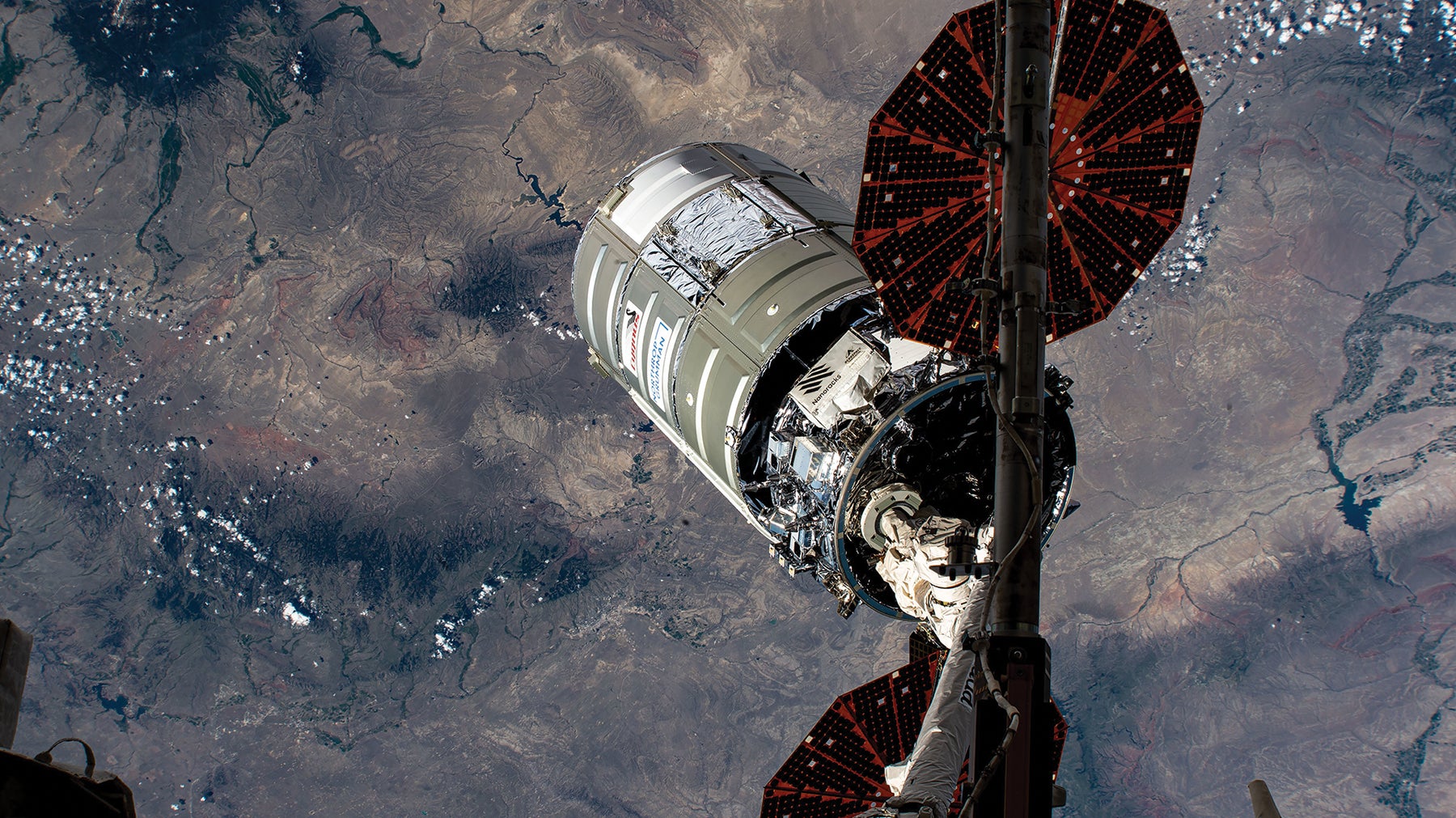With the establishment of the U.S. Space Force in 2019, the national security space enterprise underwent its largest transformation since the Army launched the first American satellite in 1958. In the ensuing years, the Air Force transferred its space forces and capabilities, the Army transferred its satellite operations brigade and is preparing to transfer its theater missile-warning units, and the Navy transferred its military communications satellites to the Space Force. Additionally, hundreds of soldiers, sailors, airmen and Marines voluntarily joined the Space Force through interservice transfers.
In the Space Force era, a question arises about which space forces and capabilities other services should retain. The answer is that the Army, along with the other services, must retain service-unique space forces and capabilities to support Army missions that only soldiers can perform.
Before exploring the future of the Army in space, there is historical precedent worth reflecting upon. Correlating the Space Force and the Air Force establishment in 1947 highlights the benefits of the Army, Marine Corps and Navy retaining service-unique air forces and capabilities. While the Air Force consolidated the preponderance of pilots and aircraft, other services advanced requirements in support of their respective domains. For example, the Army and Marine Corps developed close air support and air-transport capabilities, and the Navy advanced its naval aviation capabilities. Other services retaining pilots and aircraft allowed the Air Force to focus on its mission to “fly, fight and win—airpower anytime, anywhere.”
The same logic should apply to space forces and capabilities. Having other services retain space professionals and capabilities allows the Space Force to better focus on its top priority to “preserve freedom of action in the space domain.”

What to Transition
The next question is, what space forces and capabilities should transition to the Space Force and what should other services retain? For the Army, transitioning its satellite operations brigade and preparing to transfer its theater missile-warning units makes sense. These functions allow the Space Force to centrally manage all military satellite communications and missile-warning functions.
However, the transfer does increase the burden for other services to integrate another service’s capability. The integration burden highlights the importance for the Army to retain space forces. Specifically, Army space operations officers incur the integration burden to ensure that the Army receives space-based capabilities. Next, the Army must expand its cadre of space planners, who aid in leveraging and integrating space capabilities.
Army space professionals share two unique qualities. First, they understand the Army and large-scale ground maneuver. Second, they understand the space domain and how space-based capabilities affect the Army, and they can enable multidomain operations.
Army space officers become space professionals as a secondary career field, which typically differentiates them from their Space Force counterparts. This means that before becoming space officers, they have training and experience in a basic branch such as infantry or signal corps. Prior experience often includes combat deployments and real-world examples of how space capabilities affect the Army. The broad range of knowledge, skills and experience makes Army space professionals uniquely suited to leverage and integrate joint space capabilities to support the Army and multidomain operations.
As the Army matures its cadre of space professionals, it should reevaluate officer career management and space warrant officer and NCO career fields. A reevaluation could result in the functional area transitioning to become a separate branch. Next, the Army must invest its resources in the following four space mission areas: positioning, navigation and timing (PNT) and alternative navigation; friendly-force tracking; space control; and tactical intelligence, surveillance and reconnaissance (ISR).

Mission Area Investments
The new Army operations field manual, FM 3-0: Operations, says the Army cannot assume unconstrained use of space-based capabilities and must prepare to operate in a denied, degraded and disrupted space domain. Army investments in PNT and alternative navigation, friendly-force tracking, space control and tactical ISR mitigate the risk of losing space-based capabilities.
The first mission area the Army must invest in is PNT and alternative navigation. Because PNT is so critical to the battlefield, the Army established the Assured PNT/Space Cross-Functional Team in 2017. As the name indicates, the team assures that the Army will have dependable PNT signals today and on the battlefields of the future.
PNT enables more future Army requirements than any other space-based mission area. These requirements include what the Army of 2030 must do, such as sense farther, concentrate lethal forces, deliver precise long-range fires, sustain the fight, protect friendly forces and communicate and share data beyond line of sight. It is also important to note that the Army will continue using Space Force’s GPS as its primary PNT signal and will invest in modernizing GPS user equipment.
Transitioning to a related mission area, the Army must invest in friendly-force tracking capabilities like Blue Force Tracking devices. Like GPS, almost every Army unit, at all echelons, uses friendly-force tracking devices for situational awareness. In a recent investment, the Army signed a $410 million contract with Inmarsat Government, a commercial satellite company, to support tens of thousands of Army platforms. Future investments should codify the Army’s role as the DoD lead for friendly-force tracking. While the user equipment is space-enabled, the friendly-force tracking requirement disproportionately benefits the Army and ground forces.
Taking Control
The next mission the Army must invest in is space control. As adversaries further develop space capabilities for hostile purposes, space control becomes increasingly relevant on the battlefield. Space control prevents adversaries from using space capabilities for hostile purposes or creating a degraded space environment that puts the Army at risk. The Army uses space control “to deny an adversary freedom of action in space,” as stated in Field Manual 3-14: Army Space Operations. In other words, space control enables multidomain operations and protects friendly forces. Space control is fundamentally a ground-to-space support by fire that provides 21st century camouflage and concealment.
The desired effect, or reason, the Army uses space control differentiates it from other services. For the Space Force, a desired effect might be to achieve space superiority and preserve freedom of action in space overall, while the Army is enabling multidomain operations and protecting its forces in theater. Overlooking these subtle distinctions and service-specific requirements is a mistake. Consolidating space control capabilities into a single service dilutes the intended purpose of the capability.
The final mission area the Army must invest in to maintain its competitive edge is tactical ISR. The Army should pursue tactical ISR investments, like many other mission areas, collaboratively with the Space Force, the DoD’s lead integrator of joint space requirements.
For tactical ISR, the Army seeks to improve and reduce its sensor-to-shooter timeline. The centerpiece of tactical ISR is to enable the Army to sense farther and deliver precise long-range fires through TITAN, the Army’s Tactical Intelligence Targeting Access Node. Tactical ISR is different from traditional ISR sources because it allows the Army to receive data independent of terrestrial sources. This increases the Army’s ability to receive reliable data at the forwardmost edge of the battlefield.
In addition to the four mission areas, the underpinning for future Army space investments must be adequate research, development, testing and evaluation to ensure the Army continuously assesses its investments.

Common Understanding
As previously mentioned, the Army transferred its satellite operations brigade to the Space Force. While the Space Force assumed responsibility for all military satellite communications, the Army will still develop and procure service-unique satellite communication receivers and ground terminals. This interdependency between services requires space forces from each service to understand each other’s requirements.
Following the transfer of its missile-warning units, the Army will need to develop a similar relationship with the Space Force to receive missile-warning data. While the Army requirement to receive prompt, accurate missile-warning information has not changed, the information provider will. The Army must shift focus from processing and disseminating theater-level missile-warning data to being a recipient of it.
For the remaining space mission areas—space situational awareness, environmental monitoring, nuclear detonation detection and “spacelift” (the ability to deliver payloads into space)—the Army should continue to leverage other DoD agencies and services for continued support.
As Space Force defines its own unique culture, the same must be true for all space forces. The same was true for the Air Force and pilots across all services. The Army cannot become encumbered by traditional domain parochialism—especially when a space mission area is critical to success on the battlefield. Without Army space forces and capabilities, an Army of 2030 is not a multidomain-capable force.
The Space Force establishment highlights the need for more space forces and capabilities in all services, not fewer. Army space must define its unique service culture centered around its Army space professionals, who leverage and integrate space capabilities. Simultaneously, the Army must invest in PNT and alternative navigation, friendly-force tracking, space control and tactical ISR. These mission areas enable the Army to fight and win wars.
* * *
Col. Pete Atkinson is the space division chief with the Strategic Operations Directorate, Headquarters, Department of the Army, the Pentagon. Previously, he was a military fellow at the Massachusetts Institute of Technology.

